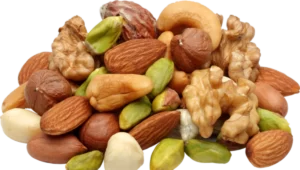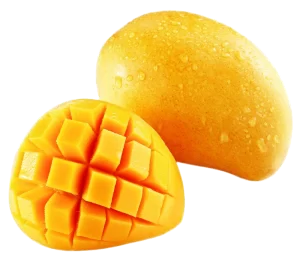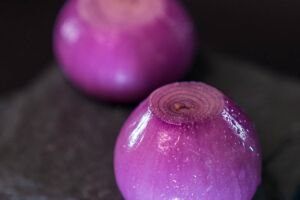Vitamin E foods are an essential nutrient that is crucial for our overall health and well-being. It is a powerful antioxidant that plays a critical role in protecting our cells from damage caused by free radicals. In this article, we will explore what vitamin E is, why it is important, and the many health benefits that come with incorporating it into your diet.
What is Vitamin E?
Vitamin E is a fat-soluble vitamin that is found in many foods, including nuts, seeds, vegetable oils, and leafy greens. There are eight different forms of vitamin E, but the most common and biologically active form is alpha-tocopherol.

Why is Vitamin E Important?
As mentioned earlier, vitamin E is a powerful antioxidant that helps protect our cells from damage caused by free radicals. Free radicals are unstable molecules that can cause oxidative stress and damage to our cells, which can lead to a variety of health problems, including cancer, heart disease, and Alzheimer’s disease.
In addition to its antioxidant properties, vitamin E also plays a critical role in immune function, cell signaling, and gene expression. It is also important for maintaining healthy skin, eyes, and brain function.
Health Benefits of Vitamin E
Reduced Risk of Chronic Diseases: Studies have shown that individuals with higher levels of vitamin E in their blood have a reduced risk of chronic diseases, such as heart disease and cancer.
- Improved Immune Function: Vitamin E plays a crucial role in maintaining a healthy immune system. It helps to regulate immune cell function and can enhance the body’s ability to fight off infections and diseases.
- Healthy Skin and Eyes: Vitamin E is essential for maintaining healthy skin and eyes. It can help to reduce inflammation, prevent damage from UV rays, and improve skin elasticity.
- Brain Health: Vitamin E may also play a role in protecting against cognitive decline and Alzheimer’s disease. Studies have shown that individuals with higher levels of vitamin E have better cognitive function and a lower risk of developing Alzheimer’s.
How to Incorporate Vitamin E into Your Diet?
The best way to incorporate vitamin E into your diet is through a balanced and varied diet. Foods that are high in vitamin E include:
- Nuts and seeds (almonds, sunflower seeds, peanuts)
- Vegetable oils (olive oil, sunflower oil, safflower oil)
- Leafy greens (spinach, kale, collard greens)
- Avocado
- Mango
- Tomatoes
- Broccoli
- Supplements are also available, but it is always best to consult with a healthcare professional before starting any supplement regimen.
Vitamin E-Foods In India
Vitamin E is a fat-soluble vitamin that acts as a powerful antioxidant in the body. It helps to protect cells from oxidative stress, which can cause damage and lead to various health problems. Here are some foods that are good sources of vitamin E:
1. Nuts and Seeds:
Nuts and seeds are some of the best sources of vitamin E. Almonds, sunflower seeds, hazelnuts, peanuts, and pine nuts are all rich in this nutrient. Just a handful of nuts or seeds can provide a significant amount of vitamin E.
| Seed/Nut | Vitamin E Content (mg) | Calories | Protein (g) | Fat (g) | Carbohydrates (g) | Fiber (g) |
|---|---|---|---|---|---|---|
| Sunflower Seeds | 7.4 | 160 | 5.5 | 14.0 | 6.0 | 3.0 |
| Almonds | 7.3 | 160 | 6.0 | 14.0 | 6.0 | 3.5 |
| Hazelnuts | 4.3 | 180 | 4.0 | 17.0 | 5.0 | 3.0 |
| Pine Nuts | 2.6 | 190 | 3.9 | 19.0 | 4.0 | 1.0 |
| Peanuts | 2.4 | 160 | 7.0 | 14.0 | 6.0 | 2.5 |
| Pumpkin Seeds | 2.6 | 150 | 8.0 | 13.0 | 5.0 | 1.7 |
| Chia Seeds | 0.9 | 138 | 4.7 | 8.7 | 12.3 | 9.8 |
| Flaxseeds | 1.0 | 150 | 5.2 | 12.0 | 8.0 | 7.6 |
| Walnuts | 0.7 | 185 | 4.3 | 18.5 | 3.9 | 1.9 |
| Sesame Seeds | 0.7 | 160 | 5.0 | 14.0 | 7.0 | 4.0 |
| Pecans | 0.7 | 200 | 2.6 | 20.0 | 4.0 | 2.7 |
2. Vegetable Oils:
Vegetable oils like sunflower oil, safflower oil, and wheat germ oil are high in vitamin E. They can be used in cooking, baking, or as a dressing for salads. Here’s a table listing the nutritional contents of common vegetable oils, including their Vitamin E content, per 1 tablespoon (about 14 grams) serving:
| Vegetable Oil | Vitamin E Content (mg) | Calories | Total Fat (g) | Saturated Fat (g) | Monounsaturated Fat (g) | Polyunsaturated Fat (g) |
|---|---|---|---|---|---|---|
| Olive Oil | 1.9 | 120 | 14 | 2 | 10 | 1.4 |
| Sunflower Oil | 5.6 | 124 | 14 | 1.5 | 8 | 4.5 |
| Soybean Oil | 6.7 | 120 | 14 | 2 | 4.8 | 7.8 |
| Canola Oil | 2.4 | 124 | 14 | 1 | 8 | 4.1 |
| Corn Oil | 1.9 | 120 | 14 | 2 | 3.7 | 7.0 |
| Peanut Oil | 4.3 | 120 | 14 | 2.3 | 6.2 | 4.3 |
| Safflower Oil | 4.6 | 120 | 14 | 1.2 | 10.1 | 2.2 |
| Grapeseed Oil | 3.9 | 120 | 14 | 1 | 9.5 | 2.7 |
| Coconut Oil | 0 | 117 | 13.6 | 11.2 | 0.8 | 0.2 |
3. Leafy Greens:
Dark leafy greens like spinach, Swiss chard, and kale are also good sources of vitamin E. These vegetables are also rich in other nutrients like vitamin C, iron, and calcium.

Here’s the list of 11 common leafy greens, including their Vitamin E content, calories, and other nutritional information per 1 cup (about 30 grams) serving:
| Leafy Green | Vitamin E Content (mg) | Calories | Carbohydrates (g) | Dietary Fiber (g) | Protein (g) | Vitamin A (IU) | Vitamin C (mg) |
|---|---|---|---|---|---|---|---|
| Spinach | 0.6 | 7 | 1 | 0.7 | 0.9 | 2813 | 8.4 |
| Kale | 0.2 | 33 | 6 | 1.3 | 2.9 | 10302 | 80.4 |
| Swiss Chard | 0.2 | 7 | 1 | 0.6 | 0.5 | 3065 | 10.8 |
| Collard Greens | 0.2 | 11 | 2 | 1.3 | 1.1 | 10462 | 21.0 |
| Romaine Lettuce | 0.1 | 8 | 2 | 1.2 | 0.5 | 4092 | 1.0 |
| Arugula | 0.4 | 5 | 0.7 | 0.3 | 0.5 | 474 | 3.7 |
| Beet Greens | 0.7 | 8 | 1 | 1.6 | 0.9 | 220 | 4.2 |
| Mustard Greens | 0.2 | 15 | 2 | 1.1 | 1.5 | 5248 | 47.2 |
| Bok Choy | 0.2 | 9 | 1 | 0.7 | 1.0 | 1447 | 31.8 |
| Watercress | 0.2 | 4 | 0.4 | 0.2 | 0.8 | 1064 | 7.0 |
| Cabbage | 0.1 | 22 | 5 | 2.2 | 1.1 | 87 | 28.1 |
4. Avocado:
Avocado is a delicious and healthy fruit that is rich in healthy fats, fiber, and various vitamins and minerals, including vitamin E.
5. Tomatoes:
Tomatoes are a good source of vitamin E, as well as other antioxidants like lycopene. They can be enjoyed raw in salads or cooked in a variety of dishes.

6. Fruits:
Mango is a sweet and juicy fruit that is rich in vitamin E, as well as vitamin C and fiber. It can be enjoyed fresh or used in smoothies, salads, or desserts.

Here’s The list of 11 common Indian fruits, including their Vitamin E content, calories, and other nutritional information per 100-gram serving:
| Fruit | Vitamin E Content (mg) | Calories | Carbohydrates (g) | Dietary Fiber (g) | Protein (g) | Vitamin A (IU) | Vitamin C (mg) |
|---|---|---|---|---|---|---|---|
| Mango | 0.9 | 60 | 15.0 | 1.6 | 0.8 | 54 | 36.4 |
| Guava | 0.7 | 68 | 14.0 | 9.0 | 2.6 | 624 | 228.3 |
| Papaya | 0.6 | 43 | 11.0 | 1.7 | 0.5 | 328 | 60.9 |
| Banana | 0.1 | 89 | 23.0 | 2.6 | 1.1 | 64 | 8.7 |
| Pineapple | 0.1 | 50 | 13.1 | 1.4 | 0.5 | 58 | 47.8 |
| Pomegranate | 0.6 | 83 | 18.7 | 4.0 | 1.7 | 0 | 10.2 |
| Lychee | 0.1 | 66 | 16.5 | 1.3 | 0.8 | 0 | 136.0 |
| Sapota (Chikoo) | 0.4 | 83 | 19.7 | 5.3 | 0.4 | 32 | 14.7 |
| Amla (Indian Gooseberry) | 0.8 | 47 | 11.7 | 7.0 | 0.9 | 445 | 478.9 |
| Jackfruit | 0.3 | 95 | 23.2 | 1.5 | 2.5 | 110 | 13.8 |
| Indian Plum (Jamun) | 0.7 | 60 | 14.0 | 1.1 | 0.6 | 0 | 18.0 |
7. Broccoli:
Broccoli is a nutrient-dense vegetable that is high in fiber, vitamins, and minerals, including vitamin E. It can be eaten raw or cooked in a variety of dishes.
8. Spinach:
Spinach is a leafy green that is rich in various vitamins and minerals, including vitamin E. It can be eaten raw in salads, cooked as a side dish, or blended into smoothies.
9. Papaya:
Papaya is a tropical fruit that is rich in vitamin E, vitamin C, and other antioxidants. It can be enjoyed fresh, or used in smoothies, salads, or desserts.
10. Butternut Squash:
Butternut squash is a winter squash that is high in fiber, vitamins, and minerals, including vitamin E. It can be roasted, baked, or used in soups and stews.
11. Olive Oil:
Olive oil is a healthy fat that is high in vitamin E, as well as other antioxidants and anti-inflammatory compounds. It can be used as a cooking oil, salad dressing, or dipping sauce.
12. Trout:
Trout is a type of fish that is rich in omega-3 fatty acids, protein, and vitamin E. It can be baked, grilled, or pan-fried for a delicious and nutritious meal.
13. Bell Peppers:
Bell peppers are a colorful and crunchy vegetable that is rich in vitamin E, vitamin C, and other antioxidants. They can be eaten raw in salads, roasted, or used in stir-fries and fajitas.
14. Wheat Germ:
Wheat germ is the part of the wheat kernel that contains the most nutrients, including vitamin E, protein, and fiber. It can be added to smoothies, yogurt, or baked goods for a nutritional boost.
15. Hazelnuts:
Hazelnuts are a type of nut that is rich in vitamin E, healthy fats, and protein. They can be eaten raw as a snack, or used in baking and cooking.
Incorporating a variety of vitamin E-rich foods into your diet is a great way to ensure that you are getting enough of this important nutrient.
16. Asparagus:
Asparagus is a low-calorie vegetable that is packed with vitamins and minerals, including vitamin E. It can be grilled, roasted, or steamed as a side dish.
17. Kiwi:
Kiwi is a sweet and tangy fruit that is loaded with vitamin E, vitamin C, and other antioxidants. It can be enjoyed on its own or used in salads, smoothies, or desserts.
18. Turnip Greens:
Turnip greens are a leafy green vegetable that is high in vitamin E, as well as vitamin K, calcium, and folate. They can be sautéed, steamed, or used in soups and stews.
19. Peanut Butter:
Peanut butter is a delicious and convenient source of vitamin E, as well as healthy fats, protein, and fiber. It can be used as a spread on toast, crackers, or fruit, or added to smoothies and baked goods.
20. Mango Butter:
Mango butter is a natural, plant-based butter that is extracted from the kernels of the mango fruit. It is a rich source of vitamin E, as well as other beneficial compounds like fatty acids and antioxidants. It can be used in skincare products or as a cooking oil.
21. Swiss Chard:
Swiss chard is a leafy green vegetable that is high in vitamin E, as well as other vitamins and minerals like iron and magnesium. It can be eaten raw in salads or cooked in a variety of dishes.
22. Red Palm Oil:
Red palm oil is a rich source of vitamin E, as well as other antioxidants and healthy fats. It can be used in cooking or as a dressing for salads.
Adding these vitamin E-rich foods to your diet can help you maintain optimal levels of this important nutrient and support overall health and well-being.
23. Almonds:
Almonds are a nut that is rich in vitamin E, as well as healthy fats and protein. They can be eaten raw as a snack, or used in baking, cooking, or as a topping for salads.
24. Sunflower Seeds:
Sunflower seeds are a tasty and nutritious snack that is high in vitamin E, as well as other minerals like magnesium and zinc. They can be eaten raw, roasted, or used as a garnish for salads and soups.
25. Broccoli:
Broccoli is a cruciferous vegetable that is loaded with vitamins and minerals, including vitamin E. It can be eaten raw in salads, roasted, or used in soups and stir-fries.
26. Pumpkin:
Pumpkin is a versatile vegetable that is high in fiber, vitamins, and minerals, including vitamin E. It can be roasted, baked, or used in soups and stews.
27. Tomatoes:
Tomatoes are a flavorful and nutritious fruit that is high in vitamin E, as well as other vitamins and antioxidants. They can be eaten raw in salads, used in sauces and salsas, or roasted.
28. Dried Apricots:
Dried apricots are a tasty and convenient snack that is high in vitamin E, as well as fiber and antioxidants. They can be eaten on their own or used in baking and cooking.
29. Mustard Greens:
Mustard greens are a leafy green vegetable that is packed with vitamins and minerals, including vitamin E. They can be eaten raw in salads, used in soups and stews, or sautéed as a side dish.
Incorporating these vitamin E-rich foods into your diet can help you meet your daily nutrient needs and support overall health and wellness.
It is important to note that vitamin E is a fat-soluble vitamin, meaning it is absorbed better when consumed with healthy fats. Therefore, it is recommended to consume vitamin E-rich foods with sources of healthy fats such as olive oil, nuts, seeds, and avocado for better absorption.
















